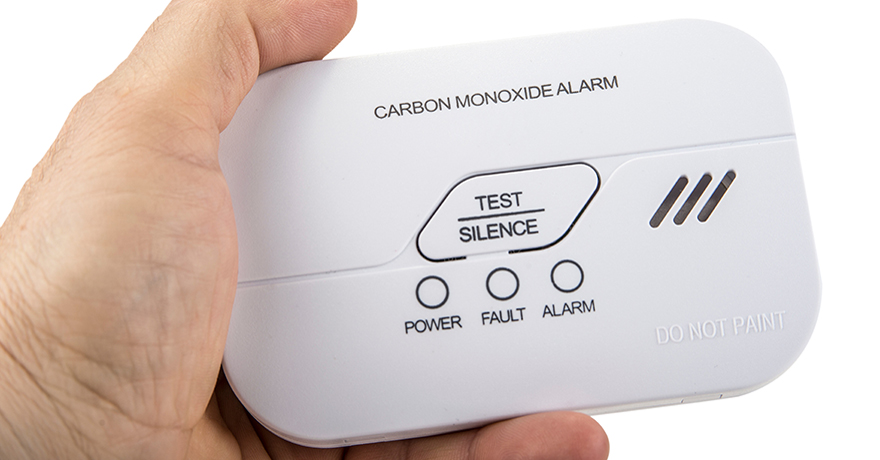Protecting Your Home & Family from Carbon Monoxide
- Winter 2023

Carbon monoxide (CO) is a colorless, odorless gas that can be deadly if undetected and inhaled in high concentrations. It is produced by the incomplete combustion of fossil fuels, such as gas, oil, and wood. As carbon monoxide is virtually undetectable by human senses, it is crucial to take proactive measures to prevent its buildup in your home. Follow these tips to ensure the safety of you and your loved ones and prevent carbon monoxide poisoning.
Install Carbon Monoxide Detectors.
One of the most effective ways to protect your home from carbon monoxide poisoning is to install carbon monoxide detectors. These devices are designed to alert you if elevated levels of CO are detected in the air. Install detectors in key areas of your home, especially near bedrooms and common living spaces. Regularly check and replace the batteries to ensure the detectors are in working condition.
Maintain Heating Appliances.
Regular maintenance of heating appliances is essential for their safe operation. Have your furnace, fireplace, and other heating devices inspected by a qualified professional. This includes cleaning and inspecting the flues, chimneys, and exhaust systems. Ensure that any necessary repairs or cleaning are performed to prevent the release of CO into your home. Additionally, replace air filters regularly to maintain optimal performance.
Ensure Proper Ventilation.
Good ventilation is key to preventing carbon monoxide buildup indoors. Keep vents and chimneys clear of debris, snow and ice to ensure exhaust gases can exit your home safely. Never block vents or flues and be cautious when using space heaters in enclosed spaces. If you use a generator, operate it outdoors to prevent CO from accumulating inside.
Use Generators Safely.
Generators can be a lifesaver during power outages, but they also pose a significant risk of carbon monoxide poisoning if not used correctly. Always run generators outdoors in a well-ventilated area, away from doors and windows. Never use a generator in an attached garage, even with the garage door open, as CO can still enter your home. Follow the manufacturer's guidelines for safe operation.
Never Use Gas Appliances Indoors.
Never use gas-powered equipment or appliances intended for outdoor use inside your home. This includes generators, grills, and camping stoves. Using such devices indoors can lead to the rapid buildup of carbon monoxide. In addition, using gas stoves or ovens as a heat source can also lead to CO buildup. These appliances are not designed for continuous heating. Use all gas-powered equipment and appliances for their intended purpose only.
Properly Ventilate Your Garage.
If your home has an attached garage, be mindful that carbon monoxide may seep into living spaces. Never leave your vehicle running in an attached garage, even with the garage door open. Additionally, make sure there is proper ventilation in the garage area to allow any fumes to dissipate quickly.
Educate Yourself and Your Family.
Knowledge is a powerful tool in preventing carbon monoxide poisoning. Educate your family members about the dangers of CO and the importance of proper safety measures. Teach them to recognize the symptoms of CO poisoning, including headaches, dizziness, nausea, and confusion. Instruct everyone in your household on what to do if the CO detector alarms sound—evacuate the premises immediately and call emergency services.
Preventing carbon monoxide poisoning requires a combination of awareness, regular maintenance, and the use of safety devices like carbon monoxide detectors. By taking these precautions, you can significantly reduce the risk of exposure to this silent but potentially deadly gas.

